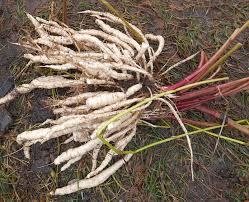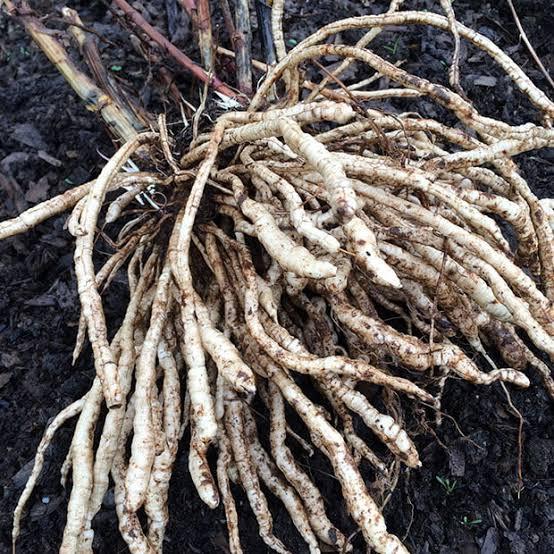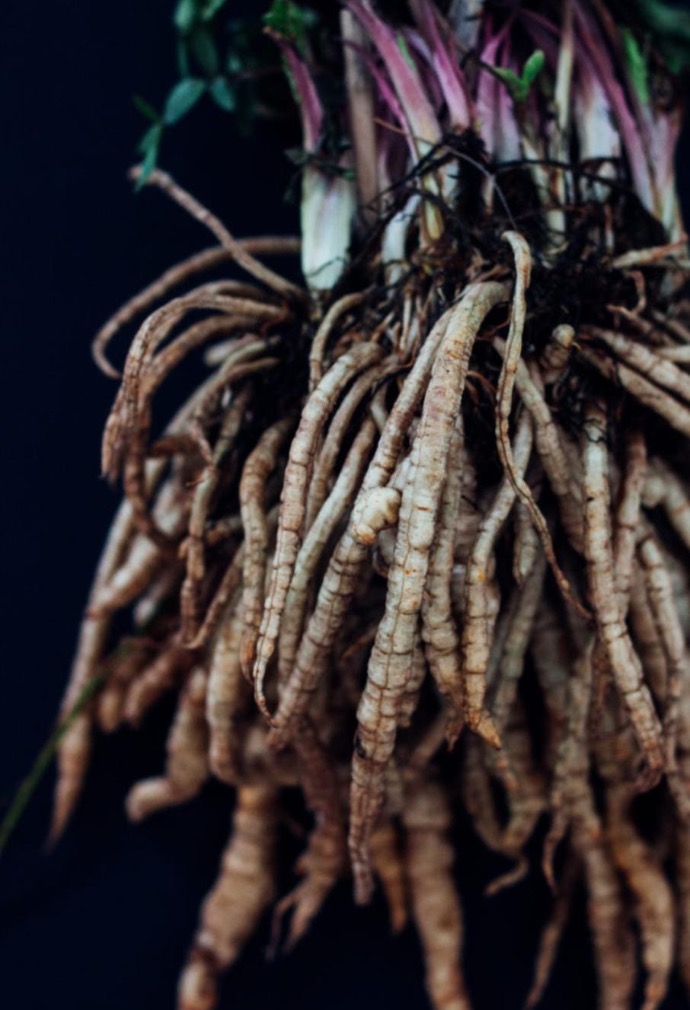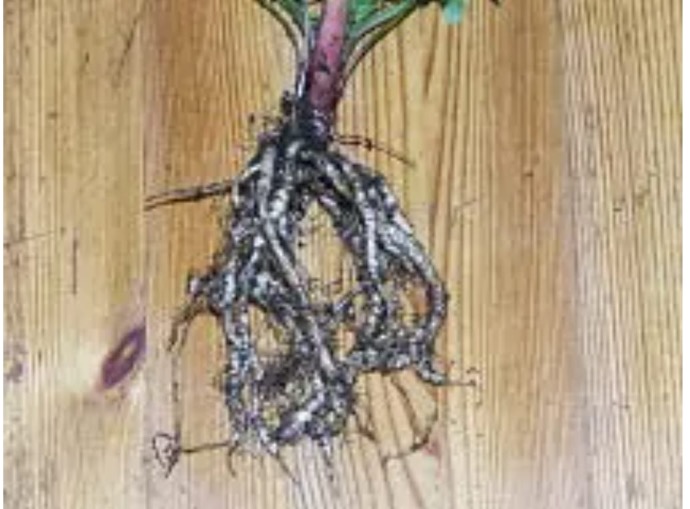Skirret Plant
Skirret, a perennial, requires well-drained, fertile soil and partial shade to full sun. It's frost-tolerant, slow-growing, and benefits from consistent moisture.
Habit
Perennial
Height
60-100 cm
Growth
Slow
Soil
Moist, well-drained
Shade
Partial shade to Full Sun
Moisture
Most
Edible
Yes
Medicinal
Yes
Origin
Europe, Asia
Climatic Condition
Temperate
Temperature (°)
5 to 25°C
Humidity (%)
50-70%
Potting media
Loamy, peat
Fertilizers
Organic, low NPK
Watering
Regular
Plant Weight
200-500 g
Flowering Time
Fall
Soil Ph level
6.0 - 7.5
Water Ph level
6.0 - 7.0
Soil EC
1-2 dS/m
Yield Per Plant
Root crop
NPK ratio
10:10:10
life Span
Perennial
Health Benefits
Root vegetable
Suggested Grow Media or Potting Mix ?
50% loam, 25% compost, 25% sand
Suggested Fertigation/Fertilizers
Fertilize every 4 weeks with a balanced fertilizer.
Common Diseases and Remedies
black blight , wilt
Pinprick spots on the leaves , blackening of stem
Avoid irrigation , avoid excess irrigation
HEALTH BENEFITS
· A root vegetable rich in fiber and antioxidants.
· Supports digestion, blood sugar regulation, and heart health.
What Is An Skirret Plant?
Sium sisarum, commonly known as skirret, is a perennial plant of the family Apiaceae sometimes grown as a root vegetable. The English name skirret is derived from the Middle English 'skirwhit' or 'skirwort', meaning 'white root'.

What Are The Different Types Of Skirret Plants?
White Skirret: This variety produces white roots that are sweet and flavorful, similar to parsnips. It is the most common type of skirret.
Red Skirret: Some varieties of skirret may have reddish roots, which can add visual interest to the garden. However, these are less common than white skirret.
Yellow Skirret: Another less common variety, yellow skirret, may have roots with a yellowish hue. This variety is also known for its sweet flavor.
Purple Skirret: Some skirret varieties may have roots with a purple tint, although these are rare. Purple skirret may have a slightly different flavor compared to other varieties.

Location
Choose a sunny spot in your garden or food forest.
Sunshine
Skirret grows wild in Europe and Asia. It is a fairly adaptable crop. In the wild, it is largely a streamside plant, but it does just fine row cropped in a garden as well. It produces best in full sun but will tolerate shade at a small cost to root production.
Soil
Skirret performs well in acidic to neutral soils. Well drained soils are best, but skirret grows well even in heavy, swampy soil.
Hydration
Water deeply and often until the plant is well established, especially during dry spells and during summer. As basically a wild plant, skirret doesn't need much attention during the growing season. Make sure that the soil doesn't dry out. Otherwise, skirret fends for itself.
Nourishment
Mulch with compost and autumn leaves every winter to feed the plants. Water deeply and often until the plant is well established, especially during dry spells and during summer. As basically a wild plant, skirret doesn't need much attention during the growing season. Make sure that the soil doesn't dry out.
Issues
For cultivation, skirret seems to like moist, free-draining soil in full sun. It's said not to like hot weather but this isn't a problem that I experience much. I'd advise growing it in rich, well-fertilised soil as a poorly fed skirret will produce thin roots that aren't worth harvesting.
Benifits
Skirret makes a great addition to soups, where its soft texture will cause it to break apart and act as a sweetener and thickener. The spring shoots are also edible. They can be blanched or eaten raw. A thick bundle of harvestable storage roots on this 3-year old plant.

FAQs About Growing Skirret
How tall do skirret plants get?
The plants grow to be 3 to 4 feet tall with roots that are 6 to 18 inches long. Its leaves are dark green, large, glossy, and are compound pinnate, meaning they look like feathers. Skirret roots are gray-white that cluster at the base of the plant.
Is skirret a sun or shade plant?
It produces best in full sun but will tolerate shade at a small cost to root production.
Are skirret greens edible?
Skirret is normally eaten cooked, as the roots are rather hard when raw. Cooked roots are very soft and sweet, like a combination of potato and carrot. The spring shoots are also used as a vegetable.
What does skirret look like?
Skirret plants grow to between 3-4 feet in height with large, glossy, dark green, compound pinnate leaves. Plants blossom with small, white flowers.
How far apart do you plant skirret?
30cm. (The spacing in old manuals is sometimes as close as 15cm between plants and 30cm between rows, which may be worth trying). Few pests and diseases are reported for skirret.

